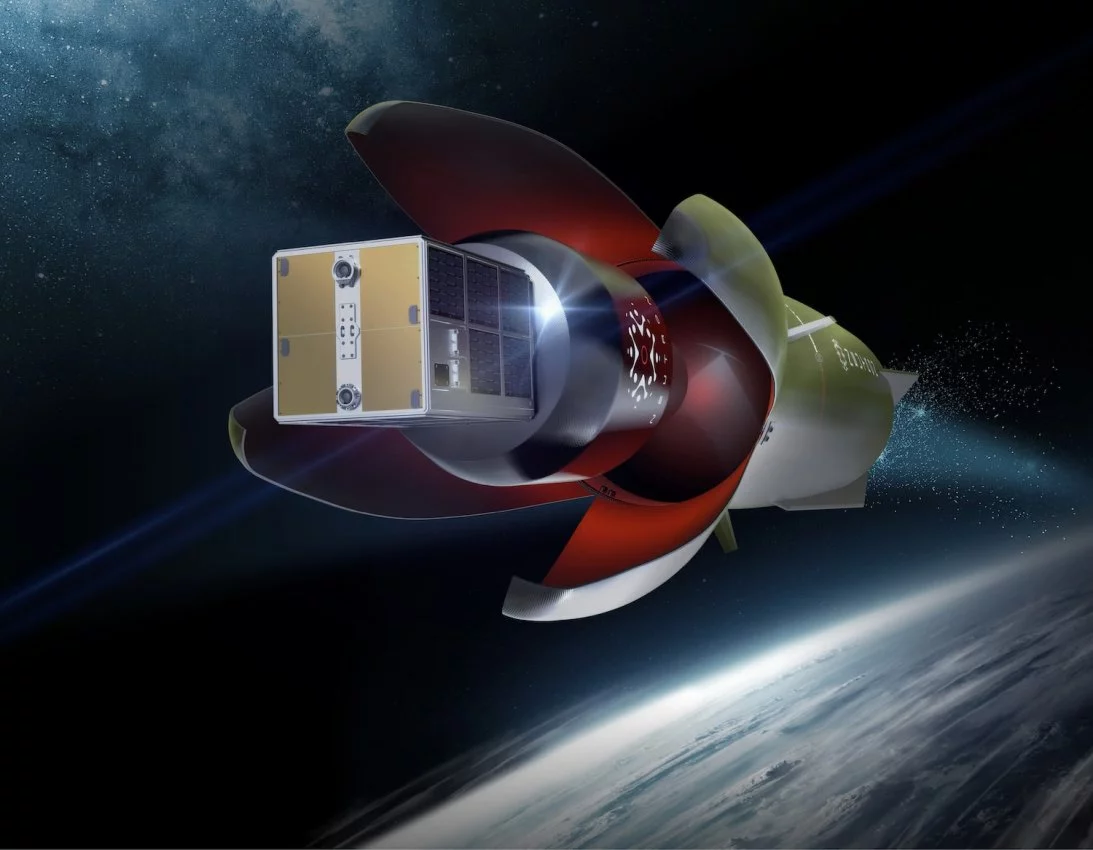Rocket Lab has unveiled its concept for a new reusable launch vehicle called Neutron. Looking like something a Bond villain would deploy, it carries its second stage inside a permanently attached captive “Hungry Hippo” fairing design.
A new booster rocket is usually about as interesting as the aesthetics of a new flat screen television, but as commercial spaceflight heats up, some new designs aim at real paradigm shifts. In the case of Neutron, Rocket Lab says it looked at how the needs of prospective customers have changed and incorporated these into the successor to its Electron rocket.
In this case, Neutron is intended to handle satellite mega-constellations, deep space missions, and astronaut flights with an advanced launcher capable of lifting eight tonnes into orbit and then returning to Earth for reuse after a minimal turnaround time.
Looking at Neutron, the first thing that stands out is that the 131-ft-tall (40-m) rocket is shaped less like a pen and more like a soda bottle, with a thick, squat outline. The reason for this is to provide Neutron with a wide, stable base that allows it to make powered landings without the need for a deployable set of legs. Its low center of gravity also means it doesn't need elaborate launch infrastructure like strongbacks or launch towers.

The hull of the craft is made out of an advanced carbon composite material that is stronger, lighter, and more durable than metal equivalents. Made using an automated fiber placement system, Rocket Lab says that meters of the material can be laid down on the shell in a matter of minutes.
Inside the first stage of the rocket would be seven Archimedes engines, which are now under development. Burning a mixture of methane and liquid oxygen they generate 1.3 million lb (5,960 kN) of thrust. The second stage uses one vacuum-optimized Archimedes engine for 250,000 lb (1,110 kN) of thrust.
Speaking of the second stage, you might be wondering where it is. Instead of being stacked, the second stage sits inside the permanently attached fairing atop the first stage. During launch, the fairing's petals open like the jaws of the infamous SPECTRE rocket featured in the 1967 James Bond thriller You Only Live Twice. However, instead of capturing Russian and American space capsules, it reveals the second stage, which deploys and fires.

Instead of being jettisoned, the "Hungry Hippo" fairing is designed to close again, allowing the Neutron's first stage to return to Earth, using a set of canard fins for atmospheric maneuvering to set down on its launch site rather than a drone barge at sea.
According to Rocket Lab, this unorthodox design, along with a much less complex engine, allows the entire launch system to be simpler and lighter because the second stage doesn't need to support any structural load or be exposed to atmospheric stress. In addition, by treating the second stage as a payload, it's much easier to reuse the first stage. Rather than being restacked, a new second stage is simply loaded into the nose cone.
“Neutron is not a conventional rocket," says Rocket Lab founder and CEO Peter Beck. "It’s a new breed of launch vehicle with reliability, reusability and cost reduction is hard baked into the advanced design from day one. Neutron incorporates the best innovations of the past and marries them with cutting edge technology and materials to deliver a rocket for the future. More than 80 percent of the satellites to be launched in the next decade are expected to be constellations, which have unique deployment needs that Neutron is the first vehicle to address specifically. Like we did with Electron, rather than starting with a traditional rocket design, we focused on our customers’ needs and worked back from there. The result is a rocket that is right-sized for market demand and can launch fast, frequently and affordably.”
The video below introduces the Neutron launch vehicle.
Source: Rocket Lab






